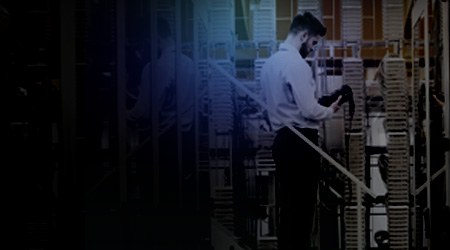How to Reduce Energy Use in Legacy Data Centers
Just because a data center is old doesn't mean it can't still be energy efficient. Here are some specific steps to take to reduce energy use in legacy data centers.
When modernized to operate efficiently, legacy data centers in the right location that are properly sized may have many productive years left, according to the experts. In fact, properly operated and maintained, they are less costly than constructing a new data center elsewhere. And they even may be less costly, long-term, than co-location or cloud options, says Michael Fluegeman, director of engineering and principal at PlanNet Consulting, LLC.
Facility managers have many options for improving energy efficiency in a legacy data center. (See below.) One is simply making sure maintenance is up to date. Upgrading equipment is another possibility, provided the payback analysis makes sense. For example, replacing uninterruptible power supply (UPS) or computer room air conditioning (CRAC) units, or modifying emergency generators to operate on dual fuels, such as diesel and natural gas.
Changes in the use of the data center can present opportunities to improve efficiency.
For example, if additional electrical load is needed for IT hardware, using air side and water side economizers along with other precooling technologies can get more out of existing systems.
“Many times you can actually get some extra cooling out of your existing system without overtaxing it,” says Manula.
A move to the cloud can create the risk of energy waste, but also the opportunity for energy savings. Some legacy software applications simply are not “cloud ready” and probably are best served by the legacy center. But when the IT department shifts data loads to cloud, edge technology, and micro data centers, legacy data centers often end up oversized for their current needs. Ideally, the remaining load should be consolidated to a concentrated area so that cooling and power distribution are focused. Redirecting cooling to specific areas is a way to reduce the mechanical systems energy bill. However, experts agree that may not be feasible because of other IT constraints.
Facility managers also should consider the level of redundancy required in legacy data centers, says Andrew McKenzie, director of converged services for data center services at CBRE.
“For example, if cooling is currently 2N, can it be reduced to N+1 to save overhead?” he asks.
McKenzie says that such decisions must balance risk with reward.
“But by working with technology colleagues to understand the nature of the systems in a particular data center — and what disaster recovery and business continuity plans are in place — an enterprise may be able to accept more risk in a single data center to allow investment dollars to be used more wisely elsewhere.
Both the facility management team and the IT team must work on a converged solution. Facility managers can’t ask for funding to expand while IT simultaneously seeks funding to migrate payloads to the cloud, says McKenzie.
"Only by having all stakeholders in a data center’s ‘ecosystem’ working closely from a design, operational, and financial perspective can enterprises operate the facilities most effectively and at lowest cost,” he says.
Justifying investment
Despite the opportunities that energy efficiency presents, it can be challenging to get funding for projects.
“Data centers are complex environments that are often the primary targets for cost-optimization initiatives,” writes Cecci.
When it’s time to upgrade supporting building systems, a strong financial case must be made. Smith uses historical maintenance and operating expenses in arguing for new equipment. In this example of a a hypothetical new UPS unit, power equipment is depreciated over 15 years or 180 months.
“A $30,000 UPS unit would hit the bottom line at a depreciation rate of $167 per month,” says Smith. “If your equipment upgrade can produce an energy savings of $167 per month, that essentially becomes a net zero new expense.
“Now, let’s consider you were paying an average of $10,000 per year in repairs over the last five years,” Smith continues. “New equipment will have an initial warranty period that will vary, but assuming the first year is covered that purchase technically returns $833 per month to the bottom line, because you were able to remove it from the maintenance operating budget.”
Smith also recommends developing a good relationship with the chief financial officer’s office to help in calculating the organization’s cost of money and impact to the monthly bottom line.
“With your detailed supporting figures, they can help greatly in defining the return on investment or lack of one in a new equipment purchase,” says Smith.
Rita Tatum, a contributing writer for Building Operating Management, has more than 30 years of experience covering facility management.
Energy efficiency checklist
For legacy data centers, Fluegeman says that facility managers should consider these steps to save energy:
• Manage cooling airflow
• Increase temperature setpoints with revised airflow
• Operate cooling units in team mode
• Reduce or eliminate humidification
• Refresh aging cooling equipment and also UPS if necessary
• Retrofit fans and pumps with variable speed units
• Right-size oversized equipment
• Consider redundancy configurations to avoid full 2N configurations
All of these measures require careful analysis and proper engineering, but they are worth considering in legacy data centers looking to reduce energy use.
Related Topics:













